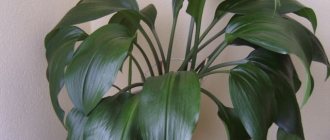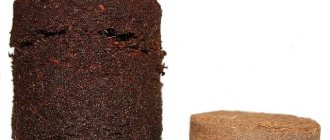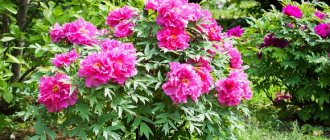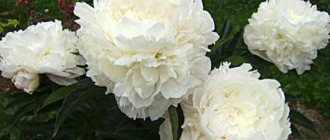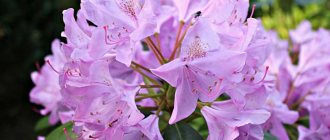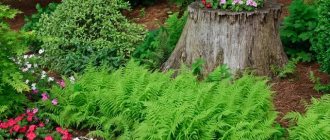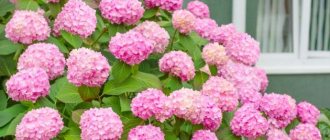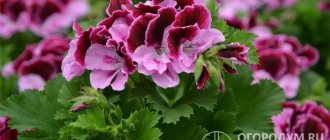Plants » Flowers
0
355
Article rating
Larisa Kosterina
Silver dollar hydrangea is another gem among the paniculate species created in the new millennium. Yes, it lacked the aggressive marketing campaign of the Limelight hydrangea, but its beauty and unique properties mean that this variety is on the same level of winners.
Hydrangea silver dollar photo
Description of the variety
Full name: Hydrangea paniculata Silver Dollar.
The variety, grown by Dutch breeder Pieter Zwijnenburg at the turn of the century, received the AGM (Award of Garden Merit) from the British Royal Horticultural Society in 2008 for its outstanding ornamental qualities, stability of shape and resistance to disease.
The flower received the highest score, three points, for its popularity among European gardeners.
External parameters
Hydrangea Silver Dollar produces large (up to 25 cm) conical panicles, consisting mainly of sterile flowers (those with larger petals).
Light green flowers appear in mid-July, later changing to almost pure white, becoming pale pink in late summer and early fall.
The panicles hold well on strong raspberry-brown stems in both wind and rain. The leaves are ovoid or oval in shape, pointed, dark green, and do not change color in the fall.
The shrub is compact, moderately growing, grows quickly, and does not lie down under the weight of massive inflorescences.
Bush dimensions:
- height – up to 1.8 m;
- diameter – up to 1.5 m.
The correct natural shape, dense panicles, completely covered with large sterile flowers, long flowering - all this transforms the Silver Dollar from an ordinary resident of a flower garden into its main decoration.
The flowers stand well when cut and retain their shape and color for a long time when dried.
Hydrangea paniculata Silver dollar
All flower growers, without exception, want to place in their garden more decorative, but at the same time unpretentious plants that are resistant to various kinds of negative environmental factors. There are many such crops among hydrangeas. Take note of the Silver Dollar variety, which has many advantages.
This culture belongs to paniculate hydrangeas. It looks like a powerful perennial shrub 2 meters high with a crown coverage of similar diameter. The plant has straight, strong shoots covered with dark brown bark, and oblong, pointed leaves of a dark green hue, equipped with jagged edges. The crown of the Silver dollar is symmetrical, round in shape. This variety, like other types of hydrangea, is famous for its inflorescences. In this case, they are large, at first airy and light, later dense, with a characteristic cone-shaped top. The shape of the flower “candles” is wide-pyramidal. Each Silver Dollar inflorescence consists of many sterile, snow-white flowers, which, as buds, delight the eye with a delicate greenish tone. By September they acquire a pinkish color or a pale lilac hue. The flowering of the crop continues from mid-summer to October. Despite their impressive size, the inflorescences do not create much stress on the shoots, and they remain directed vertically upward throughout the entire flowering period. Thus, the bush does not require support, and its stems do not require tying.
The variety has high cold resistance. Frosts down to -34ºС cannot harm it. Hydrangea is very resistant to insect pests and various diseases.
Landing Features
Paniculate hydrangeas are found in the wild in the south of Sakhalin, China and Japan. This is the most frost-resistant species of the hydrangea family. The plant forms panicles on the current year's shoots, so even frosts down to -34° C do not damage the flower buds.
Hydrangea dollar silver
Unpretentious, growing in any acidic soil, undemanding to lighting, pan-hydrangea can only suffer from improper agricultural practices during cultivation.
Deadlines
Planting material is usually sold with a closed root system, so planting can be carried out throughout the entire period with an average daily temperature above zero.
In central Russia this is the first half of May. At this time, the snow has already melted, the soil is suitable for cultivation, has warmed up to a depth of 10-15 cm, but has not yet lost the necessary moisture.
If planting is planned in the fall, then the only limitation is that for complete rooting the seedling must be planted a month before sustained frost.
Selecting a location
A sunny, warm area, protected from drafts, is an ideal place for hydrangea. Even better if there is shade there at midday.
Hydrangea does not like direct midday sun: its large leaves quickly evaporate moisture and wither in the sun. She prefers lacy partial shade or sun in the early morning and after 3 pm. With such lighting, the decorative properties of the Silver Dollar will be fully revealed. Near the wall, near the fence, in the transparent shade of large trees is the most comfortable place for him.
Preparation of planting material
A good seedling has at least 2 shoots and a healthy root system without mold or plaque. The roots should be elastic, moist and not overdried.
Hydrangea silver dollar photo and description
Leaves have good turgor, bright green color. Spots, tubercles on leaf blades and stems, cobwebs are signs of diseases or pests. Such instances must be resolutely abandoned.
A seedling with an open root system (ROS) is soaked for several hours in a root stimulator solution before planting.
Landing technology
The root system of hydrangeas grows in breadth, not in depth. The planting hole should be of such a size that the roots fit there in a straightened state. Its depth and width depend on the age and variety of seedling, but usually it is 0.5 x 0.7 m.
Optimal soil composition for planting (in equal proportions):
- fertile loam that can retain moisture;
- high peat;
- coniferous land;
- humus.
When planting, complex mineral fertilizers (NPK) are added. In spring - with a high proportion of nitrogen, in autumn - with a high content of potassium and phosphorus.
Acidity pH=4.5-6. Alkalinization causes chlorosis of leaves.
Hydrangea is a moisture-loving plant, but it does not tolerate stagnation of moisture at the roots, this provokes their rotting. Wetlands or areas with a close approach to groundwater will cause fungal diseases in the flower; such places should be avoided.
Landing algorithm:
- The roots are shortened by 3-5 cm, the shoots are cut to 5-6 buds.
- Drainage must be laid at the bottom of the planting hole.
- Pour 10-20 cm of prepared soil.
- Water generously.
- Place a seedling with straightened roots (in the case of ACS) or install an earthen ball from a container with ZKS.
- Cover with fertile mixture so that the root collar remains at ground level.
- Compact and mulch with peat.
- Watered.
- Shade.
The seedling needs to be watered more often in the first 7-10 days, because... the roots will not yet provide enough moisture to the plant.
How to plant?
Before you think about planting, you should decide exactly where the shrub will be located. The fact is that the area must have diffused lighting and moist soil. It is necessary that it be protected from drafts and cold winds. In addition, the soil must have a special composition.
If the area is in the sun, the plant will not feel very comfortable and will begin to grow and bloom worse. Therefore, partial shade would be the best option. If it is not possible to find a shaded place, then you will need to think about artificial shading of the bush, especially on hot sunny days. Too strong drafts can also have an adverse effect; it is better to position yourself next to a fence or against the wall of the house.
It should be noted that all hydrangeas are moisture-loving plants. It is necessary to ensure that there is no stagnation of water in the soil, but the top layer should not be dry. It is best to stay on neutral or slightly acidic soil. Alkaline soil is categorically not recommended, as over time it will lead to the death of the plant. Neutral soil can be acidified using high-moor peat.
The planting hole is being prepared. After this, a soil mixture is prepared, half consisting of soil, and the other half a mixture of sand and humus. The seedling is carefully placed in the hole, and its roots are straightened. After this, the hole is filled with soil mixture, compacted properly and watered. 1 bush will need 15 liters of water. When watering is finished, you need to mulch the tree trunk circle.
For this purpose, sawdust, tree bark or high-moor peat are taken. The mulch is laid 5-6 centimeters thick.
Care
The Silver Dollar was praised by experts for its endurance. It can grow in polluted city air, in small containers and in almost any type of soil, as long as it is not too heavy or shallow. But this does not mean that you do not need to look after him.
Hydrangea silver dollar description and photo
Watering
The soil should contain a lot of moisture, this is especially important during flowering. The top layer of soil can be protected from drying out by mulching with pine bark. This will provide a supply of moisture and eliminate weeds.
Most often, young plants suffer from drought, the roots of which are not deep enough into the aquifers of the soil.
Silver Dollar quickly recovers from a short-term drought, but in hot weather it needs abundant watering - at least 8-10 liters per bush.
Top dressing
Fertilizer for hydrangea is extremely important: strong bushes and abundant flowering require a lot of nutrients. Starting in spring, every month until the end of June, it is fed using multi-component mineral fertilizers without calcium. You can fertilize the bushes with manure or compost. Fertilizers are placed under the bushes, mixing it with the soil. A specialized fertilizer for this flower should contain about 2% nitrogen (N), 1% phosphorus (P2O5) and 2% potassium (K2O).
2-3 weeks before budding (end of June), a large dose of phosphorus is included in the fertilizer - this will make flowering more abundant and longer.
Potassium should predominate in fertilizing after this - it will help prepare the bushes for winter. At this time, nitrogen is excluded from mineral mixtures.
Throughout the growing season, hydrangea responds well to acidic fertilizing. Suitable for this:
- aqueous solution of citric acid (1 g per glass of water);
- any fermented milk product diluted with water in a 1:1 ratio;
- decoction of fir cones and pine needles.
Trimming
An essential element of hydrangea care is its pruning , which is carried out several times a season.
Silver dollar hydrangea paniculata
- At the turn of March and April , before the active movement of the sap, they begin cutting, leaving no more than 5 buds on the stem. Silver Dollar forms inflorescences on the current year's shoots, so early pruning allows for the formation of large, beautiful clusters. By removing all damaged and weak shoots, they create a shape for the plant. If this is not done, the bush will look untidy, with small panicles.
- In summer, pruning is carried out for thinning. In this case, the shoots growing inside are removed. These actions promote the formation of new shoots and flowers.
- In autumn, another pruning is needed, which prepares the flower for cold and snow: faded inflorescences and damaged stems are removed. Otherwise, the bush may bend under the weight of the snowdrift and break.
- Anti-aging (rejuvenating) pruning is carried out in late autumn They get rid of old shoots immediately after flowering. They are cut out at the root, and the cut areas are sprinkled with earth. In spring, new shoots appear, providing abundant flowering.
Fertilizer
To supply hydrangea with useful substances, the plant needs to be fed.
Both garden and home flowers need strength to bloom and form buds, which is what fertilizers help with. It is advisable to fertilize 4 times a season:
- At the beginning of the season, the first portion of fertilizer is applied. The deadline for feeding is the end of April. The plant should be fertilized with settled water with a small amount of nitrogen.
- After a month, it’s time for the second portion of fertilizer. At this time, the plant should be fed with potassium fertilizers. To prepare it, you need to dilute 1 tablespoon of the substance in 1 bucket of water. Distribute the resulting mixture along the perimeter of the crown and apply it to the very root.
- The next feeding should be done during the budding period. Potassium-phosphorus fertilizers will perfectly promote the development of flowering and its splendor. To prepare it, you need to dissolve 2 tablespoons of powder in 1 bucket of water and process according to the same instructions as in the previous paragraph.
- The last portion of potassium-phosphorus fertilizers should be used at the end of the hydrangea flowering period.
Preparing for winter
If the winter in your area is too harsh and snowless, then the bushes need protection. Silver dollar hydrangea recovers even after frosts of 34°C, but for normal flowering next year it is better to take care of its roots.
For this:
- the trunk circle is mulched with dry leaves, peat, and spruce branches. Biologists at the US National Arboretum recommend placing food foil on top of the mulch (such a cover saved the bush from Canadian frosts of -40°C);
- A frame of boards is created above the bush and covered with lutrasil.
Reproduction
Silver Dollar panicle hydrangea reproduces in several ways. The gardener can choose the most convenient for himself:
Hydrangea paniculata silver dollar
- In spring or autumn, the plant can be propagated by dividing the bush . To do this, dig it up, trying not to damage the roots. Then they are divided into several parts so that each has 2-3 buds. The prepared bushes are planted in a hole and watered well. Many producers carry out division without digging, for which they use a shovel or pitchfork to clear a plot of land at a distance of about 15 cm from the bush. The plant is tilted to the ground and several parts of the root with buds are cut off.
- the most effective and simple method . Medium-sized annual shoots are prepared (they take root better). Small cuttings with 2-3 leaf knots are cut from the branches. They need to be treated with a growth stimulator and planted in moist soil consisting of equal parts sand and peat. The cuttings are covered with glass jars on top and left in a dark room. It is necessary to monitor soil moisture. When the first roots appear, the container needs to be moved to a bright place. To harden plants with the arrival of spring, they should be placed on the balcony. Hydrangea is planted in open ground after the leaves appear.
- Another propagation method is dripping. To do this, at the beginning of spring, you need to carefully cut off the bark from last year’s shoot, treat the growth area with a growth stimulant, tilt it to the ground, deepening it 2-3 cm. Cover the top with soil 3 cm high. Make sure that the top of the shoot is 18–22 cm remains outside, and the buds are in the ground. Next year, the cuttings are cut from the mother bush and transplanted to a permanent place.
- Seed propagation is a labor-intensive method that is not always effective and is more often used by breeders than by amateur producers.
Watering frequency
Paniculata hydrangea loves abundant and frequent watering. In extreme summer heat, it needs to be watered daily or once every 2 days with large volumes of water. On average, 2-3 buckets of liquid are needed per bush. To ensure that moisture evaporates more slowly, it is recommended to mulch the soil. To do this, use pine needles, pine bark, shavings or sawdust.
Chlorinated water should not be used to moisten the soil; this can cause chlorosis. The liquid for irrigation must first be settled. You can collect a few buckets in the morning and leave them in the sun. During the day, the water will warm up and the harmful chlorine will evaporate. Watering should be done at a time when the sun is less active. For example, early in the morning or in the evening. It is necessary to ensure that the liquid does not fall on the inflorescences and leaves, but only on the root.
Diseases and pests
Hydrangeas are disease-resistant plants. But improper care and planting in the wrong place can cause problems:
Hydrangea paniculata silver dollar
- A substrate with too high a soil pH can cause leaf chlorosis.
- A lack of nutrients in the soil is manifested by spots on the leaves, lack of growth and wilting of the plant. Symptoms may also indicate a fungal infection.
- An incorrectly chosen location with intense insolation from direct sunlight leads to leaf burns.
- Lack of protection from cold gusts of wind and improper pruning can prevent the formation of inflorescences.
Hydrangea is affected by infections:
- gray mold;
- leaf spotting;
- powdery mildew.
Affected parts of the bush should be quickly cut off and burned. Spraying with fungicides helps in the fight against diseases.
Briefly about culture
Hydrangeas are represented by a fairly large number of varieties - more than 75, each with a unique color of inflorescences. They grow in the form of a bush or small tree. These beautiful flowering plants will add exquisite beauty to any area. And even in a small area, you can find a place for these perennials, for example, planting them along the perimeter of the garden instead of a fence like a hedge.
Hydrangea Silver Dollar
Under natural conditions, these perennials grow in some Asian countries; they are also found in Russia, including in some regions of the Far East.
These flowering plants belong to the Saxifraga family. Already from the name it is clear that hydrangeas have endurance, their above-ground and underground parts are powerful and strong.
Globular inflorescences form at the ends of the current year's stems. In some varieties, the shoots are so powerful that they do not bend to the ground under the weight of the flowers, but in most species the inflorescences bend the stems to the ground, as a result of which the bushes take on a beautiful spherical shape.
The color of hydrangea depends primarily on the presence of hydrogen in the soil (it affects the acidity of the soil). If seedlings of this flower are planted in acidic soil, which contains enough aluminum, a large amount of blue pigment is formed in the plant, as a result the color of the petals will be blue or dark blue (depending on the amount of the substance in the soil). If the soil pH is neutral or alkaline, the color of the flowers will turn pink.
Note! Thus, gardeners can independently regulate the color of hydrangeas by adding an acidic substrate or lime to the soil so that the soil becomes neutral.
Use in landscape design
Silver Hydrangea is a multi-leafed deciduous shrub with a more or less rounded shape. It is great for small gardens, personal plots and loggias. Its relatively coarse texture can be used to shade landscape plants with finer foliage.
Silver dollar hydrangea
Conifers, azaleas, rhododendrons, which also prefer acidic soil, form an excellent mixborder with 3-5 hydrangea bushes.
Silver Dollar is suitable for planting in oriental and mixed style gardens, for growing in pots and on a trunk.
This look will show itself perfectly:
- as a tapeworm against a smooth lawn;
- as a secondary plant in mass plantings;
- in multi-level compositions of a romantic or nostalgic style.
40 years is the lifespan the breeder promises for a hydrangea. This means the stability of landscape compositions is guaranteed!
Recommended soil
Silver Dollar is unpretentious to the soil. It can be planted in loamy, slightly acidic or fertile soil. But it is better to avoid planting in soil with a high lime content. If this type of soil predominates in the garden plot, it is recommended to add a little peat and humus to it. To make heavy soil lighter, you can add sand to it.
The plant thrives in shaded areas. If such a place is not found in the dacha area, you can plant shrubs in an open area. It tolerates sunlight well, but in extreme heat it is better to take care of shading. You can make a hut to protect the plant yourself using polycarbonate, fabric or agrofibre.
Reviews
Owners of small garden plots note the compactness of the variety. It, unlike other large-flowered hydrangeas, does not require much space or any supports. Flowering cones are held on strong stems, the bush does not “fall apart” under their weight.
Novice landscape lovers have noticed a feature of the Silver Dollar - its stems are devoid of leaves at a height of 15-20 cm from the ground, so low annuals look good next to it: tulips, muscari, asters, lobelia. And the standard form makes you freeze with delight!
What gardeners like most is the long-lasting bloom of the Silver Dollar. At the end of October, the garden has already faded, and only the cream caps of Silvera decorate it.
Fans of dry bouquets are happy to insert dried SilverDollar inflorescences into compositions - they do not lose shape or color when dried.
All owners of this variety have noticed its resistance to adverse conditions and care errors.
“The variety has no negative characteristics” - everyone who decided to plant this little beauty under their windows agrees with this conclusion of experts from the English Royal Society of Gardeners.
Silver dollar hydrangea
06/05/2017 Leave a comment 1,334 Views
Hydrangea paniculata silver dollar is a wonderful ornamental shrub that is very popular among gardeners. The flower is not picky and grows very well both in the garden and at home. The plant loves the sun, but blooms well in the shade. It tolerates temporary droughts well and is resistant to a variety of diseases and garden pests.
The crown of the plant is voluminous, up to 2 cm in diameter, wide and spreading. It is decorated with oblong leaves, rich green in color, with pointed edges. Silver dollar hydrangea is generously endowed with white pyramid-shaped inflorescences, which over time acquire a soft pink or lilac color. The flowering period begins in early summer and ends in autumn.

